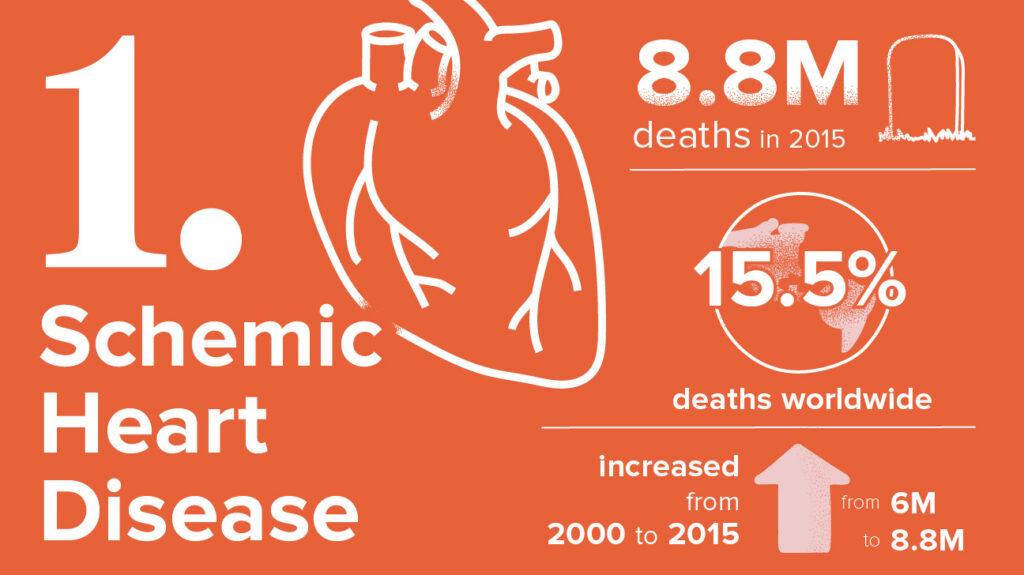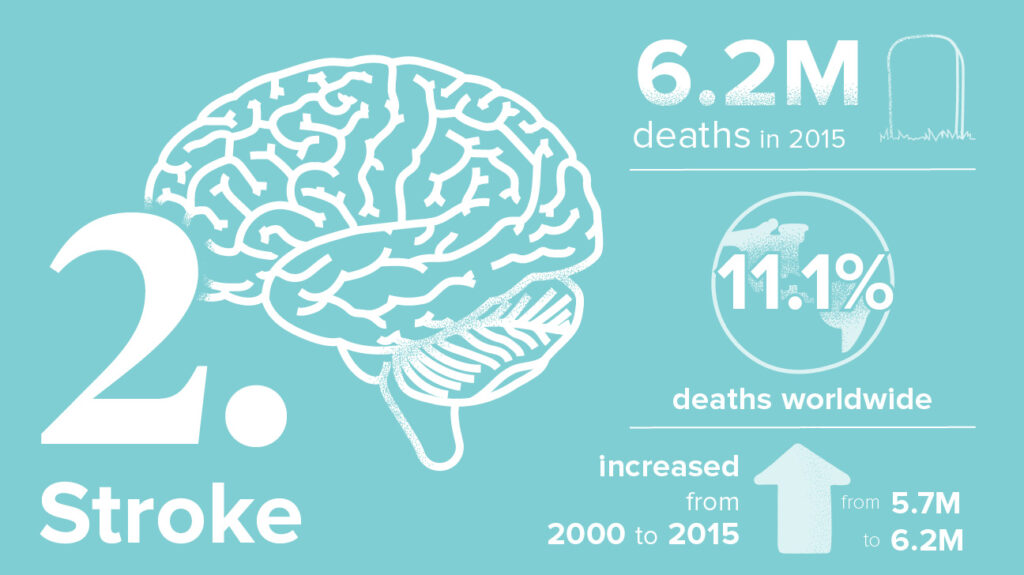
The fast-acting, incurable illnesses that occasionally make headlines come to mind when people think of the worst diseases in the world. However, a lot of these diseases don’t fall into the top 10 killers in the globe. Worldwide, an estimated 56.4 million individuals died in 2015, and 68 percent of those deaths were brought on by slowly progressing illnesses.
The fact that many of the worst illnesses are largely avoidable may be even more shocking. Where a person lives, their access to preventative care, and the standard of their healthcare are examples of non-preventable variables. Each of these influences risk. However, there are still measures that everyone may take to reduce their risk.
1. Ischemic heart disease, or coronary artery disease

Coronary artery disease is the worst illness in the world (CAD). CAD, also known as ischemic heart disease, develops when the blood arteries that provide oxygen-rich blood to the heart constrict. Arrhythmias, heart failure, and chest discomfort can result from untreated CAD.
Impact of CAD across the world
Mortality rates have decreased in several European nations and the United States, despite the fact that it is still the main cause of death. This could be the result of improved public health knowledge, healthcare accessibility, and preventative measures. However, the mortality rates of CAD are rising in many emerging countries. A growing life expectancy, socioeconomic developments, and risk factors from one’s lifestyle all contribute to this growth.
Risk factors and prevention
Risk factors for CAD include:
- high blood pressure
- high cholesterol
- smoking
- family history of CAD
- diabetes
- being overweight
If you have one or more of these risk factors, see your doctor.
With the help of medicine and by keeping your heart healthy, you may avoid developing CAD. You can take the following actions to lessen your risk:
- exercising regularly
- maintaining a healthy weight
- eating a balanced diet that’s low in sodium and high in fruits and vegetables
- avoiding smoking
- drinking only in moderation
2. Stroke

When a brain artery is stopped or leaky, a stroke happens. Within minutes, the brain cells start to die as a result of the lack of oxygen. You may experience abrupt numbness, disorientation, or difficulty walking and seeing during a stroke. A stroke can result in long-term impairment if it is not addressed.
In actuality, strokes are the main factor in long-term impairments. Following a stroke, those who receive treatment within three hours are less likely to develop problems. According to the Centers for Disease Control and Prevention (CDC)Trusted Source, 93% of respondents were aware that abrupt numbness on one side was an indication of a stroke. However, just 38% of people were aware of every sign that would make them seek emergency treatment.
Risk factors and prevention
Risk factors for stroke include:
- high blood pressure
- family history of stroke
- smoking, especially when combined with oral contraceptives
- being African-American
- being female
With the help of medicine, lifestyle modifications, and preventative treatment, several risk factors for stroke can be decreased. Generally speaking, maintaining excellent health helps reduce risk.
Controlling high blood pressure with medication or surgery is one way to avoid strokes. You should also maintain a healthy lifestyle that includes frequent exercise and a low-sodium diet. Avoid smoking, and only consume alcohol in moderation as both behaviors raise your chance of having a stroke.








